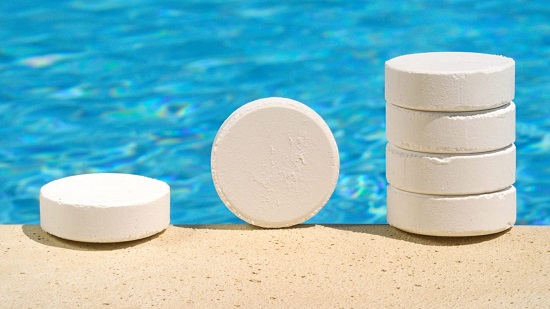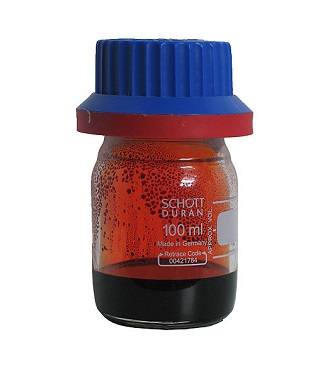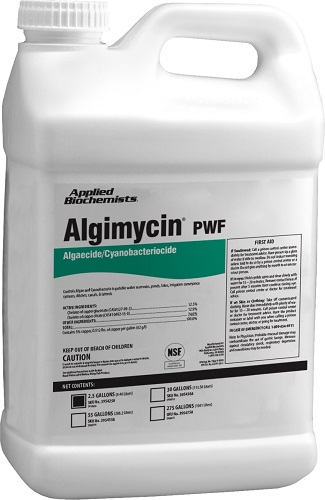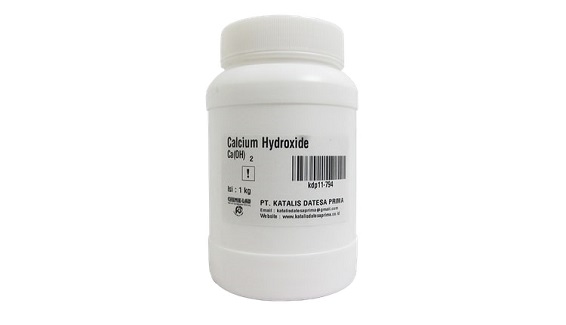Swimming Pool Chemicals are one of many important things that every pool owner should know. Not only the pool owner, but swimmer also needs to know about the chemicals too.
So, they can decide whether the water they’re about to swim in is in a good condition or not, as it will result on secured health condition.
As we know, keeping a swimming pool clean from visible trash and debris is not enough. However, there are several aspects that can’t be judged from our sight such as chemical consistency, microorganism inside of water, PH level, etc.
If we don’t pay more attention to these aspects, our swimming pool water will likely become untreated and will accumulate harmful bacteria, protozoans, and many pathogens inside.
We may have been familiar enough with Salmonella, Escherichia coli, and the other bacterias that are able to bring illness for the swimmer.
The other protozoans like Giardia sp., Cryptosporidium sp., and others are even believed to cause more serious health issue.
Considering above, we can say that doing basic and simple cleaning for swimming pool is far from enough, especially when we talk about standardized pool.
Doing manual cleaning, or simply turning on the filter may be useful to clean the water. But, this only removes the macro and visible debris, not giving any significant impact to the water quality.
This is where we need to involve swimming pool chemicals in the process. The main advantage of using a pool chemical is killing harmful pathogens and bacteria that bring bad impact to the swimmer.
Besides, giving proper chemical will secure the quality of the water too. However, choosing pool chemicals is not an easy job.
There are many kinds of chemical in the market that probably will confuse those who are not that familiar with swimming pool maintenance. To give you simple guidance, this review will explain several purposes of pool chemicals as well as its advantages and dosage.
Swimming Pool Chemical and Its Purposes in General
There are 4 sections in this article that will explain the kind of swimming pool chemical, its advantages, and dosage. Each of these sections will explain the purpose of each chemical like sanitizer, water balancers, algae killer or algaecides, and oxidizers.
What should be noted from these sections is that pool owner should follow dosage of each chemicals as advised by the factory to make sure the chemical doesn’t bring bad impact. Below is the explanation of each chemical purpose.

Swimming Pool Sanitizers
Sanitizer is one of the most important purpose of swimming pool chemical. The main job of sanitizer is killing and controlling bacteria or any germs as well as blocking algae growth.
Sanitizers is also functional to decrease the risk of virus infection or other issue caused by microorganisms. Some popular examples of sanitizers are:
Chlorine
The most popular chemical that acts as pool sanitizer is Chlorine. Chlorine, or usually called calcium or sodium hypochlorite, will react when it’s mixed to the water by releasing various acid of chemicals called hypochlorous acid.
This acid chemical is very effective in killing the harmful pathogens and bacteria. Hypochlorous acid will attack lipids of bacteria’s cell walls and then destroy the enzymes. On the other hand, hypochlorous acid will destroy the structure inside of bacteria cell by creating oxidation reaction.
In the reaction of chlorine with bacteria, both of them will have molecules combined that will end with molecules inactive. In another case, chlorin is also able to combine with nitrogen and ammonia, resulting on chloramines compound.
Since the molecules are inactive at the end of the process, chlorine will make the water safe and able to clean the water without releasing toxic, especially after getting combined with bacteria and other molecules.
However, one thing that should be remember from chlorine is that, when we’re using it, we need to make sure water pH is in balanced level.
To achieve this, the PH level needs to be between 7.4 to 7.6, which is the right level that’s not causing any skin and eyes irritation. Besides, the use of chlorine as the sanitizer is also simple.
Chlorine is able to be used in different forms such as tablets, granules, and sticks, that all are easy to dissolve in the water.
Bromine

One of the reasons of why Bromine is not as popular as chlorine is because the use of bromine is more complicated. Bromine is very slow to dissolve in the water, to make it works effectively we need to use an automatic chemical feeders.
Another reason of why bromine is least favorable is because it breaks quickly in direct sunlight. This is why many people use bromine for indoor water venue only, such as spa and indoor swimming pool that has no direct sunlight exposure.
However, the purpose of Bromine is quite similar to Chlorine, which can act as sanitizer inside of pool water.
Swimming Pool Water Balancers
As informed earlier, when using swimming pool chemical we need to consider the purpose and its dose. Avoid mixing chemicals without considering the water condition and chemical dosage, as it will bring bad impact to the water.
However, we need to make the water in balance condition in terms of chemical consistency. Therefore, swimming pool water will be safe to use and doesn’t bring any harm to the swimmer.
Some factors that needs to be considered to keep water balance are pH, alkalinity, calcium hardness, and free chlorine. In general, ideal swimming pool PH balance should be between 7.2 to 7.8.
The alkalinity total in the swimming pool water should range between 80 to 120 ppm. And the calcium hardness should have a range between 200 to 400 ppm. While for the free chlorine, it should have a range between 1 to 3 ppm.
Kinds of Swimming Pool Water Balancer
To achieve above balance range, there are water balancer chemicals. Basically these are chemicals that functions to keep the water in balance level. We can see the balance level by using test kit.
Especially for chlorine and pH levels, test needs to be conducted few times in a week. Then, every few weeks, we need to test the alkalinity and adjust the pH. Lastly, in every month, we also need to check calcium hardness and cyanuric acid levels too.
If there’s any unbalance aspect found in this testing, we can utilize water balancers chemical that has 6 functions; pH increaser, pH reducer, alkalinity increaser, calcium hardness increaser, chlorine neutralizer, chemical combo packs.
- pH increaser. It consists of several elements such as sodium carbonate or soda ash. This chemical will support the function of chlorine to last longer. With a good pH range, it will avoid the effect of corrosive and minimize the scale forming the pool water. The dosage for every 10000 gallons of water is 6 ounces of soda ash or sodium carbonate, and it will increase 2 ranges of pH. The best range of pH is in range of 7.2 to 7.6. As an alternative, if there’s no soda ash available, pool owner can replace it with ash borax in the swimming pool. The dosage is 40 ounces of borax for 10000 gallons of water that will increase 2 range of pH.
- Above chemical are only used if the PH level is too low. But, if the PH level is too high from the ideal, we need to use PH decreaser. One chemical that can be used for this purpose is sodium bisulfate or muriatic acid. This chemical can be found in the form of powder and liquid. These will lower alkalinity slightly by lowers pH in the pool water.
- Low alkalinity cause skin and eye irritation, green water, etched or stained pool walls, and floor. While high alkalinity causes cloudy water and causes the chlorine to lose efficiency as a sanitizer. That’s why we need to control alkalinity level in the pool water. When the alkalinity is too low, we need to add some alkaline increaser. One chemical that can fulfill this purpose is sodium bicarbonate or baking soda. Alkalinity is the content of alkaline inside the pool water. It supports stabilizes and prevents PH fluctuations. When the alkalinity is within ideal range, it will help to prevent the pH from bouncing in and out of range. The best range of total alkalinity is between 80-120 ppm. And the doss is 1 pound of sodium bicarbonate will increase water alkalinity up to 10 ppm in 10000 gallons of water.
- On the other hand, when the alkalinity is too high, we need to add alkalinity decreaser. One chemical that is usable for this purpose is muriatic acid or sodium bisulfate. The dosage of this chemical per every 10000 gallons of water, we need 2 pounds of dry acid that will decrease 10 ppm. This muriatic acid is available in liquid and powder form. However, please be informed that this is a very strong acid. So, to use it, please follow label instructions and storage procedures.
- If the level of calcium is too low, the water is considered as soft. Soft water is corrosive and it will dissolve calcium and other minerals from plaster pool surfaces or any metal equipment (heaters, pumps, salt cells, etc). If the calcium level is too high, the water is considered hard water. Hard water can cause scale on pool surfaces and equipment, particularly heat exchanging surfaces. So, we need to keep calcium hardness in ideal level. To maintain it, we can use Calcium hardness increaser such as calcium chloride. The ideal range of calcium hardness should be maintained between 200 and 400 ppm.
Swimming Pool Algaecides

Algae is micro plants and needs food, water, and light to grow and reproduce. This kind of microorganism brings many disadvantages to the pool. Because of algae, swimming pool condition is improper.
It looks green, and not very healthy for the skin. And to minimize the growth of algae in our swimming pool there is no better option than using algaecide.
Algaecides that is commonly used in pool water is quaternary ammonia. This swimming pool chemicals element is great for maintenance especially on keeping the algae growth light.
Quaternary ammonia is available in liquid form, with a range of the concentrations is 50% to 50%. To use algaecide, you need to put 12 oz per 10000 gallons.
That’s for when the algae growth is high. But, for weekly maintenance, when the algae growth is under control, the dosage should be 3 oz per gallons.
Another kind of algaecide is polyquats ammonia. This swimming pool chemicals are used primarily for stubborn algae growth. However, the price of this chemicals is more expensive than quats ammonia. As for concentration, we better use it in the range of 50% to 60%.
Metallic is also effective chemicals to be used as algaecides. The metallic found in the form of copper sulfate pentahydrate and colloidal silver.
Both of these are very effective against algae. But, in improper dosing or imbalanced water, it’s able to cause permanent staining that will damage pool surface.
So, using this swimming pool chemical should be in good caution. Used primarily for stubborn or persistent algae growth.
Swimming Pool Water Oxidizers
Oxidizers are the secondary sanitizer to kill bacteria and algae. One of the most popular oxidizers is Calcium hypochlorite. This substance is able to quickly sanitize pool water from bacteria and kill algae. pH of 7.2 is the best environment for Calcium hypochlorite to work effectively.

Another substance that can be used as oxidizers is Granular potassium monopersulfate. This provides fast-acting oxygen and burns cleanly with no residue. Therefore, swimmers will be able to swim without worrying chemical residue in the water.
The other oxidizers that have a good effect in oxidizing with chlorine are Sodium Hypochlorite (Bleach, Liquid Chlorine), Lithium Hypochlorite (Litho Shock), Calcium-Hypochlorite (Cal-Hypo). If we look closely on above oxidizers, most of them are chlorine-based.
However, there are other oxidizers that are Non-Chlorine based. Some examples are Monopersulfate or MPS and Potassium Peroxymonosulfate, an MPS substitute.
Oxidizes contaminants without the addition of chlorine will react quickly to aid in clearing water and leaves the pool usable within 15-20 minutes.
Primary, this kind of oxidizers is used to do shock treatment on bromine pools, especially with its ability to oxidize unwanted bromine, and revitalize bromine’s ability to sanitize. This is why this kind of oxidizers are commonly used with mineral-based systems.
That’s all the information about swimming pool chemicals that has many kinds of variety and advantages. Please be noted that swimming pool chemical, just like other chemical substances, have potential to be dangerous if it’s used improperly.
So, we need to carefully follow the instructions or simply consult with swimming pool expert to know the right way to use swimming pool chemicals.
Under the right hand all these chemicals certainly gives many advantages especially on keeping our swimming pool clean and healthy.
Swimming Pool Chemical, Originally Written by: Absari Hanifah Edited by: Eko Prasetyo



